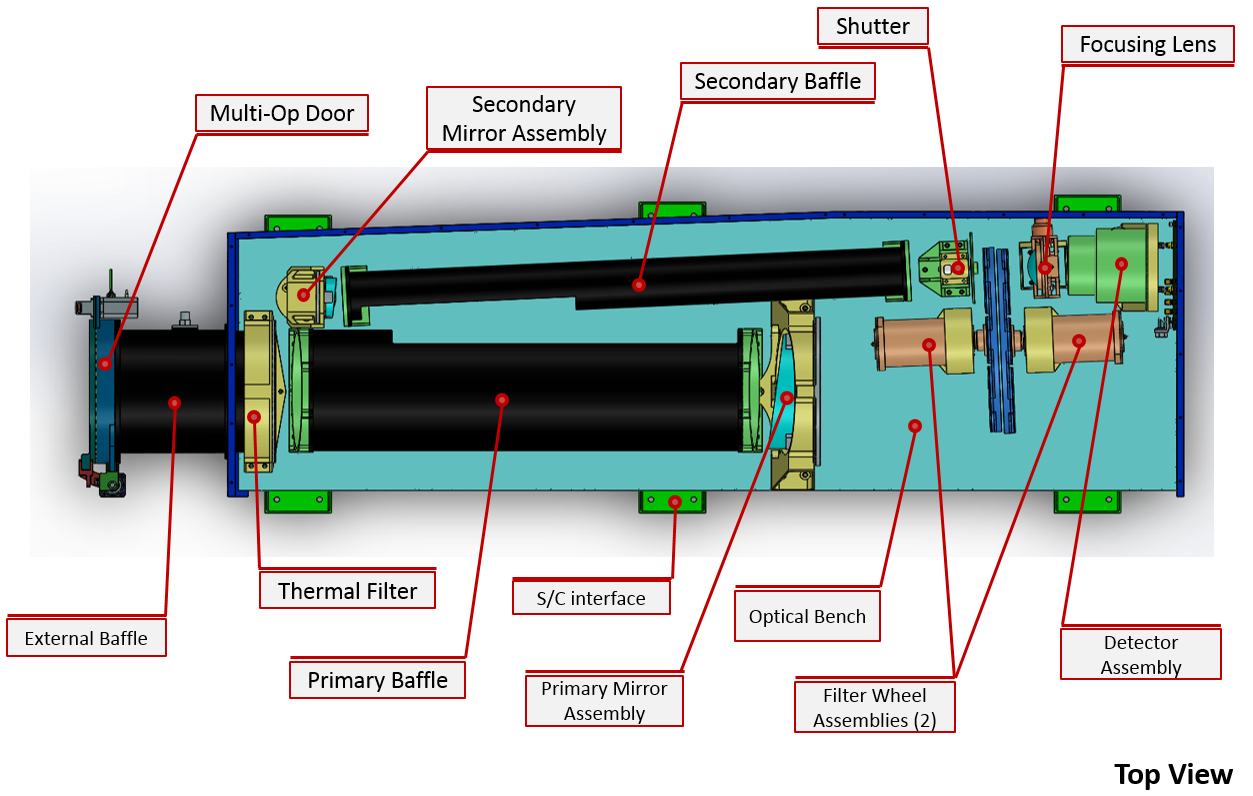The SUIT is an off-axis Ritchey-Chretien telescope onboard Aditya-L1 designed to observe the Sun in near UV wavelength range between 200 to 400 nm with a field of view of 1.5 R⊙ and a plate scale of 0.7” per pixel. The cadence of the observation depends on the mode of operation, and it can vary between 4 and 40 seconds. SUIT has 11 science filters in the 200 to 400 nm wavelength range, which are sensitive to the photospheric and chromospheric regions of the Sun. Among the 11 filters, 8 of them are narrowband filters, while the remaining three are broadband filters. The details of the filters are presented in Table 1.
The entrance baffle of the SUIT consists of a thermal filter that plays a major role in blocking the light leakage from the wavelength band outside 200-400 nm and allows the transmission to be 0.2-0.3% in the operating wavelength, thereby also maintaining the operating temperature of the telescope.
The thermal filter is followed by a primary mirror of aperture size 140 mm and a secondary mirror. The light from the telescope passes through a shutter mechanism, filter wheel assembly and a lens mounted on a piezo focusing mechanism before it is recorded by CCD. The filter wheel mechanism consists of two filter wheels with eight slots each, which accommodates both science filters and combination filters. The combination of 2 filters is chosen in such a way that it balances the flux difference in 11 science filters. The optomechanical components of the telescope are displayed in Figure 1.

Finally, the images are recorded by a 4k × 4k charge-coupled device (CCD) with an individual pixel size of 12 microns. The detector is maintained at -55° C to have negligible the dark current. The total well capacity of the CCD is 190000 electrons, and it can be operated in 3 different gain settings. The CCD can be read simultaneously in 2 or 4 readout channels. A four-channel readout reduces the readout time, which is, therefore, important in achieving a higher cadence. Further details about the CCD are listed in Table 2.